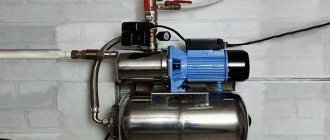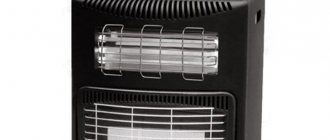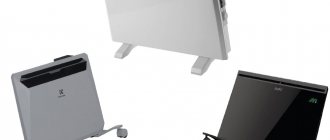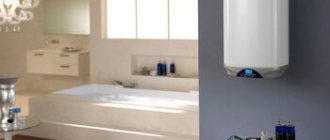| Place | Name | Characteristics in the rating |
| The best inexpensive energy-saving heaters: budget up to 3,000 rubles. |
| 1 | “Velvet Season” “Good Warmth” | The lightest and most convenient to transport |
| 2 | REDMOND SkyHeat 7003S | "Smart" convector with remote control |
| 3 | Ballu BEC/EZMR-1500 | Maximum heating area |
| 4 | Hyundai H-HV15-10-UI617 | Best asking price |
| 5 | Nikaten NT 200 | Stylish design |
| The best energy-saving heaters: budget over 3,000 rubles. |
| 1 | Polaris PMH 2085 | The best combination of power and heating area |
| 2 | Ballu BIH-AP4-1.0 | Minimum case thickness |
| 3 | Electrolux EIH/AG2-2000E | Combined technologies, increased functionality |
| 4 | Noirot Spot E-5 Plus 2000 | A large number of modes, protection against power surges |
| 5 | Timberk TEC.PF8 E 2000 IN | New with a front panel made of heat-resistant glass |
About heat loss and electric heating
Before starting the review, we note the following: just as no one has yet been able to invent a perpetual motion machine, no one has been able to deceive the law of conservation of energy. Therefore, now we will talk about heat loss.
The heat loss of a building is the amount of heat, measured in Watts, that our building loses per unit time. Thermal energy passes from the building into the ground and the surrounding air through the external walls, floor, roof, windows, external doors (external fences) - these are the main heat losses. Depending on the material used, fences resist heat transfer in different ways - the higher the resistance, the less heat loss in the house. There are also heat losses for ventilation, for the orientation of the building, for infiltration (for the penetration of cold air through cracks and leaks).
To heat the same house, no matter what appliances it is heated with and what fuel is used in them, the same power , which must compensate for the heat loss of the house .
As a rough calculation, heating 10 m2 requires 1 kW of heat. If you use gas for heating, this 1 kW will cost 50 kopecks , if you use coal it will cost 50-80 kopecks, if you use electric energy, 1 kW will cost 4 rubles ! Electric heating is one of the most expensive: you can save on installation and equipment costs, but the cost of your electricity bills will be much more than you would spend on other fuels. Remember this.
Now let's look at specific types of heaters that position themselves as energy-saving.
Economical heaters of the new generation
Electrolux ECH/R-1500 T
pros
- simple controls
- silent operation
- small dimensions
Minuses
- no emergency shutdown if dropped
From 2871 ₽
Wall convector with a monolithic heating element and a removable mechanical or electronic control unit, which can be purchased separately. In the model with a USB connector, it is possible to control the heater via a plug-in Wi-Fi module. Thanks to the increased air intake area, the room warms up quickly and evenly.
Ballu Heating module BEC/EVU-1500 + Control unit BCT/EVU-I
pros
- fast heating
- high-quality assembly
- good heat dissipation
Minuses
- short power cord
- proximity of the temperature sensor to the heating module
From 4570 ₽
A convection-type heating module with an electronic control unit is perfect as a heater for a cottage, office or apartment. The built-in display shows the necessary information about the device settings. When purchasing a Wi-Fi module, the heater can be controlled via a mobile application.
Energy saving infrared convectors
A detailed analysis of infrared convective heaters is here.
On websites selling infrared convectors, they usually write that they heat the room using convection and infrared radiation , thereby increasing the temperature in the room due to infrared radiation, and using convection, heat spreads throughout the room.
However, in reality, everything is not quite like that: an infrared convector will certainly work, but only as a convector . Infrared heating cannot be carried out in it, since this requires a surface temperature of 100 C and above, which is not realized in the so-called infrared convectors. Their temperature does not exceed 70 C. Infrared radiation at this temperature will be minimal, like that of the most ordinary radiator. So there can be no increase in temperature due to infrared heating, and even more so there can be no talk of saving. But for a beautiful name you will have to overpay: prices for infrared convectors with a power of 1 kW start from four thousand rubles, while an electric convector of the same power can be bought for two thousand.











